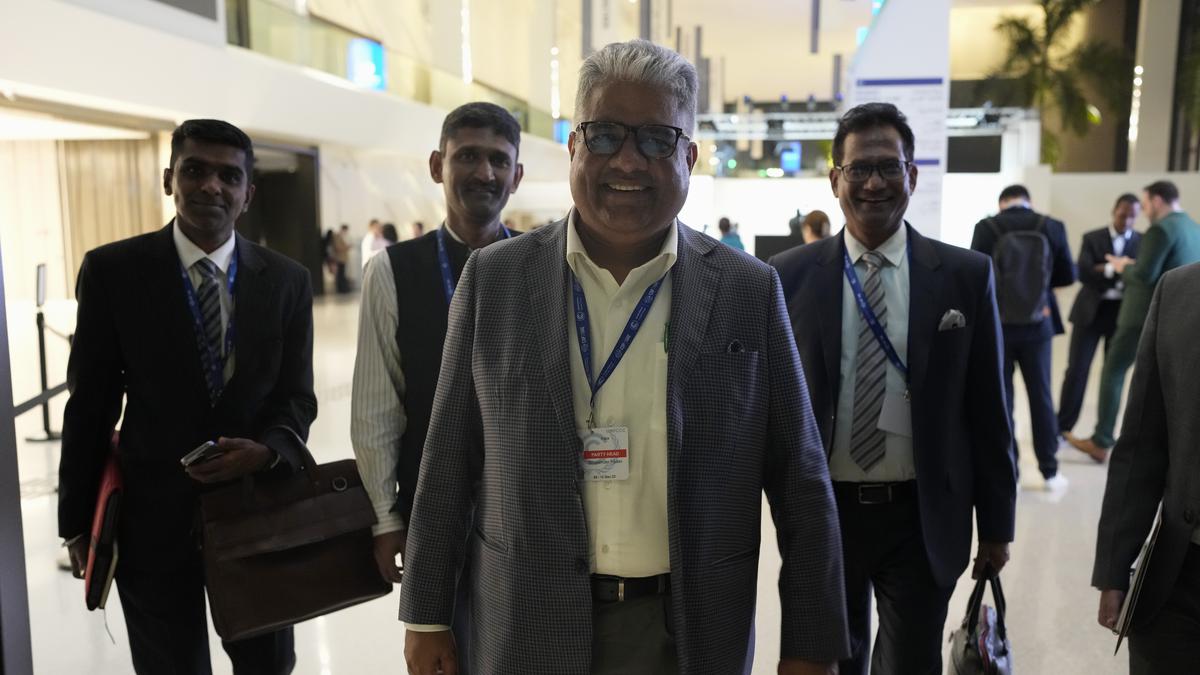
Countries must show progress on adapting to climate change by 2030: COP 28 draft document
The Hindu
By 2025, all countries must have plans to adapt to climate change and demonstrate progress by 2030. Negotiators proposed targets such as enhancing adaptive capacity by 50-90% by 2030-50. Developed countries must invest trillions in developing countries to help them adapt. India is meeting most of its adaptation expenses with its own money, but needs more resources. The GGA document lacks ambitious targets and commitments for finance and technology. India must set up a new fund to provide coverage for adaptation and resilience.
By 2025, all countries must have in place a detailed plan to adapt to the current and future impacts of climate change in their countries, and must demonstrate progress in implementing such a plan by 2030, Sunday’s draft of a key climate document said.
A final version of this Global Goal on Adaptation (GGA) document is expected to be part of the agreement when the UN’s COP-28 climate summit concludes in Dubai on December 12.
Much of the focus at the annual talks is on ‘mitigation’, getting countries to commit to time-bound plans to reduce the greenhouse gas emissions which cause climate change, reflected in the emphasis on the Global Stocktake process. However, there is an equally important process underway on ‘adaptation’, to push countries to take the steps necessary to cope with the current and future impacts of a changing climate. Global temperatures have already risen 1.1 degrees C since pre-industrial times and brought in their wake an acceleration in climate-related disasters, exhaustive scientific investigations show.
‘Adaptation’ refers to the adjustments in ecological, social or economic systems that countries must make in response to these, and other anticipated climate effects. These actions are country-specific and can range from building flood defences, setting up early warning systems for cyclones, switching to drought-resistant crops, and redesigning communication systems, business operations, and government policies, according to the UN climate division.
At COP 21 in Paris, negotiators decided that the GGA was necessary to get all countries on board a common framework for adaptation. Eight workshops were held after the last COP in Sharm el-Sheikh, Egypt where country representatives proposed concrete targets that could be used to quantitatively define whether the world was indeed becoming more adaptable vis-a-vis climate change.
For instance, they framed targets such as: “Enhance the adaptive capacity and resilience of the global population to adverse impacts of climate change by at least 50% by 2030 and by at least 90% by 2050”, or “...achieving100% coverage of multi-hazard early warning systems, climate information services and response systems by 2027”.
Just as billions and trillions of dollars are needed for mitigation, adaptation too is expected to require developed countries to invest trillions of dollars in developing countries and island states, which are most at risk from climate hazards. Again, only a fraction of what is required has made its way to where it is required.





















 Run 3 Space | Play Space Running Game
Run 3 Space | Play Space Running Game Traffic Jam 3D | Online Racing Game
Traffic Jam 3D | Online Racing Game Duck Hunt | Play Old Classic Game
Duck Hunt | Play Old Classic Game











